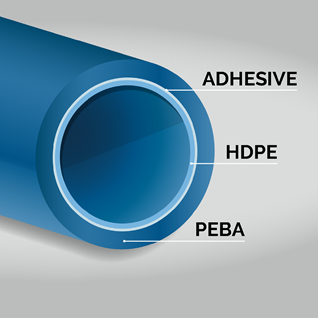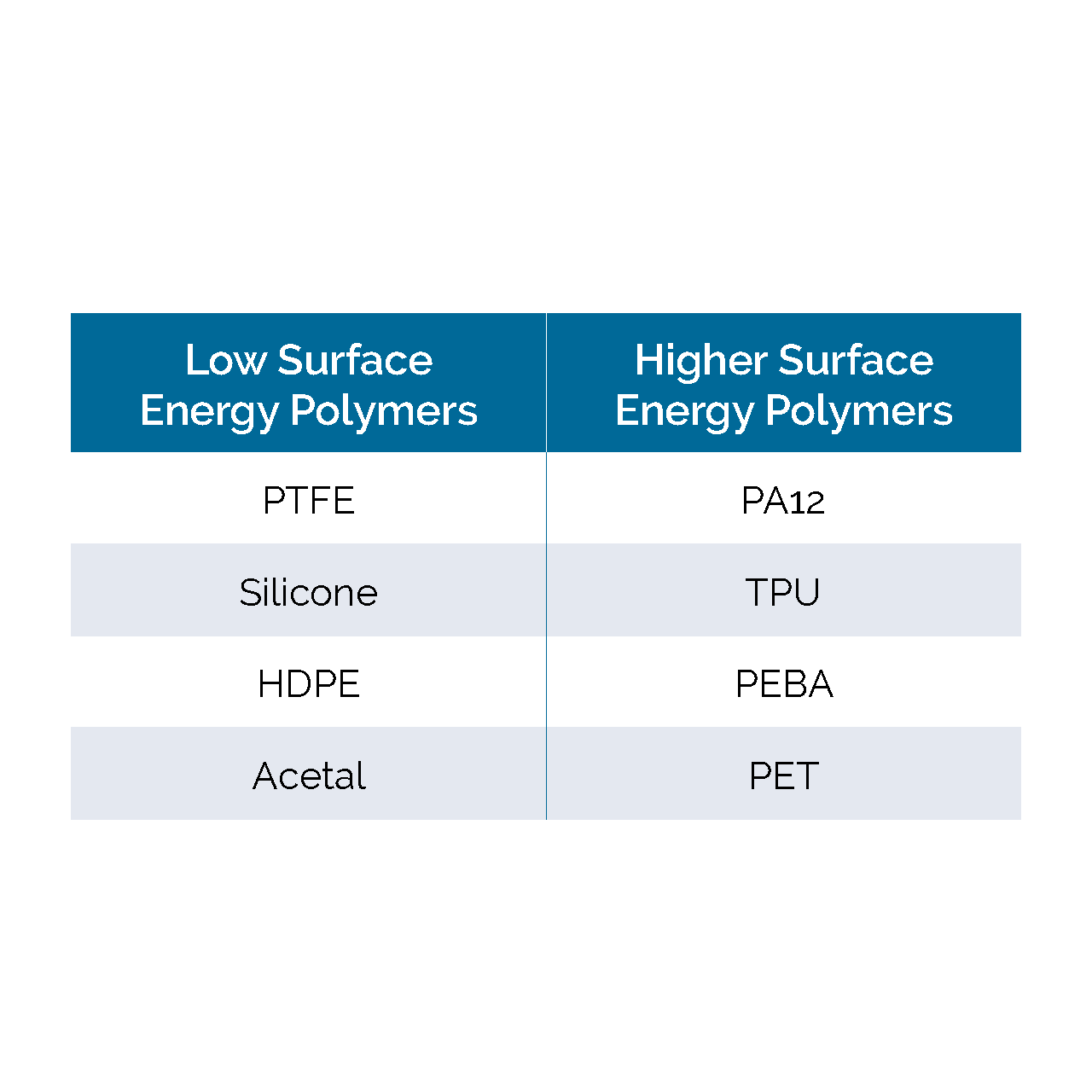The Science of Multi-Layer Extruded Tubing

The Science of Multi-Layer Extruded Tubing

Download the full White Paper here.
Multi-layer extrusion technology is a process in which two or more polymers are extruded and simultaneously joined in a co-extrusion die head to form tubing with multiple layers. Running two or three extruders into a co-extrusion die head produces a single, multi-layered, extruded tube from a combination of materials with different physical properties, friction coefficients and bonding characteristics. The extrusion process delivers materials in such a way that the individual resin layers keep their unique characteristic properties. In this article we will discuss multi-layer coextrusion of dissimilar and similar polymers.
Co-extruding dissimilar polymers:
Multilayer coextrusion poses some challenges, particularly in creating uniform wall thicknesses. Differences in the viscosities, melt temperatures and velocities of dissimilar polymers may cause problems, including delamination.
Dissimilar polymers have different chemistries with low levels of interlayer adhesion and are subject to wave like instabilities at the layer interfaces. This is compounded when polymers with low surface energies are used in the multi-layer structures. As a result of the chemical incompatibility, these different grades of polymers do not form strong bonds with each other during coextrusion, and thus, tubing comprising layers of dissimilar materials tend to be subject to delamination.
Medical device and co-extrusion polymer selection
For example, multi-layer tubing suitable for percutaneous transluminal catheters used to deliver an angioplasty balloon or stent to a calcified lesion in an artery may require a lubricious polymer on the inner layer such as high density polyethylene (HDPE) to facilitate advancement of the catheter over the guidewire. The adhesive middle layer could be made of a modified linear low density polyethene (LLDPE) and the outside may be a soft “bondable” layer such as polyether block amide (PEBA) for bonding a polyamide (PA12) or polyester (PET) non-compliant balloon to the catheter shaft. Percutaneous transluminal catheter tubing contains ultra-thin individual wall thickness down to 25 microns with internal diameters designed to support 0.014”, 0.018” and 0.035” guidewire delivery platforms.

Figure 1. Tri-layer percutaneous transluminal catheter tubing
From an extrusion standpoint, viscosity is the most important flow property in multi-layer polymer selection. Typically, the inner layer has the highest viscosity and the outer layer has the lowest viscosity as the low viscosity melt can encapsulate the high viscosity melt while flowing through the die head and tooling channels.
Polymers with compatible glass transition temperatures (Tg) and melt temperatures (Tm) should also be chosen for consistent layer distribution.
The die head used for this type of multi-layer extrusion is commonly referred to as an ABC design, because the inner layer (A), middle layer (B) and outer layer (C) are made of different polymers. The die flow channels (deflectors) are designed based on the rheology of the individual polymer layers and analyzed by using computational fluid dynamics (CFD) flow analysis software to ensure uniform flow velocities of each polymer melt stream at the die exit. When a higher velocity polymer layer merges with a lower velocity layer, the high velocity layer decelerates, causing wave like flow instabilities at the interface as shown on Figure 2. These instabilities result in intermixing of the layers, decreased mechanical performance and poor aesthetics in catheter tubing. Coextrusion process conditions can be optimized to avoid the occurrence of interlayer flow instabilities by controlling the melt temperatures of each extrudate and thereby the velocity ratios of each melt stream.

Figure 2. Wave like flow instabilities caused by velocity mismatch at the layer merge point
Adhesive (tie) layers used in multi-layer co-extrusion of dissimilar polymers
In addition to interlayer instability concerns, the lack of adhesion between the polymer layer interfaces must be considered when selecting polymers to be used in a multilayer structure. This is done in order to provide strong bonding between the adjacent polymer layers such that the layers resist delamination especially under rigorous conditions such as super high balloon inflation pressures of up to 40 atmospheres (588 psi). Hard to bond polymers are polymers with low surface energies that will delaminate when co-extruded together and therefore an adhesive layer is used to hold the layers together. A co-extruded adhesive bonding layer, commonly referred to as a “Tie” layer, acts as a stress reliever at the interface so that the layers show good uniformity and are held together to resist delamination. Table 1 lists a few common medical grade polymers in their order of bonding strength.

Table 1. Relative surface energies of common polymers used in medical device applications
Co-extruding similar polymers
Super high-pressure balloon tubing may have a wall with at least three coextruded layers of similar polymers such PA12, with varying durometer ranges for each layer. After the multi-layer tubing (preform) is reheated and formed via a stretch blow molding process into a biaxially oriented balloon, the burst performance of the multi-layer balloon is much greater than that of a traditional single-layer non-compliant dilatation or stent delivery balloon. The super high-pressure multi-layer balloons are considered, in addition to cutting balloons and rotablation, for procedures where coronary lesions are difficult to dilate due to significant calcification.
When designing a multi-layer balloon tubing extrusion of similar polymers, it is important to understand the durometers of each layer. Lower durometer polymers have an increased elongation (lower flex modulus) therefore the combined elongation should not be greater than that of the harder durometer material. The blow ratios i.e. Radial Ratio and Stretch Ratio should be designed closer to the harder durometer polymer as excessive stretch during the forming process will create delamination between the layers. Each layer is designed separately taking into consideration its position Outer/Intermediate/Inner.
Conclusion
When designing a co-extruded multi-layer tube for an intravascular application, the final physical properties of the polymers used are not the only factor. For optimal extrusion and device performance, it is also important to consider the effects of the viscosity, the polymers’ melt temperatures and durometers, and their placement in the structure.
We’re happy to help with your projects in any way we can. Contact us and we’ll email you back the information you’re looking for, or we’ll schedule a call to discuss with you in more detail.

